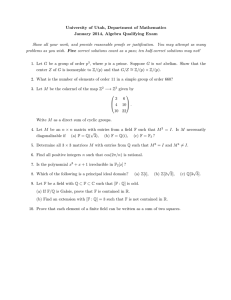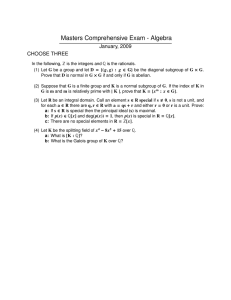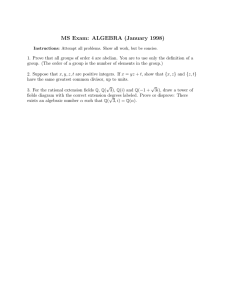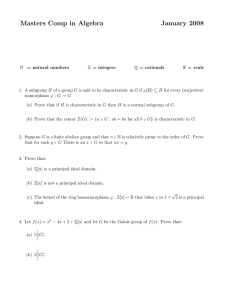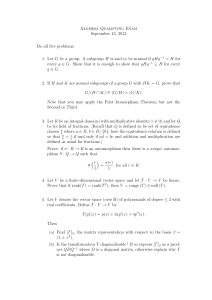Algebra Qualifying Exam September 20, 2014 Do all five problems.
advertisement
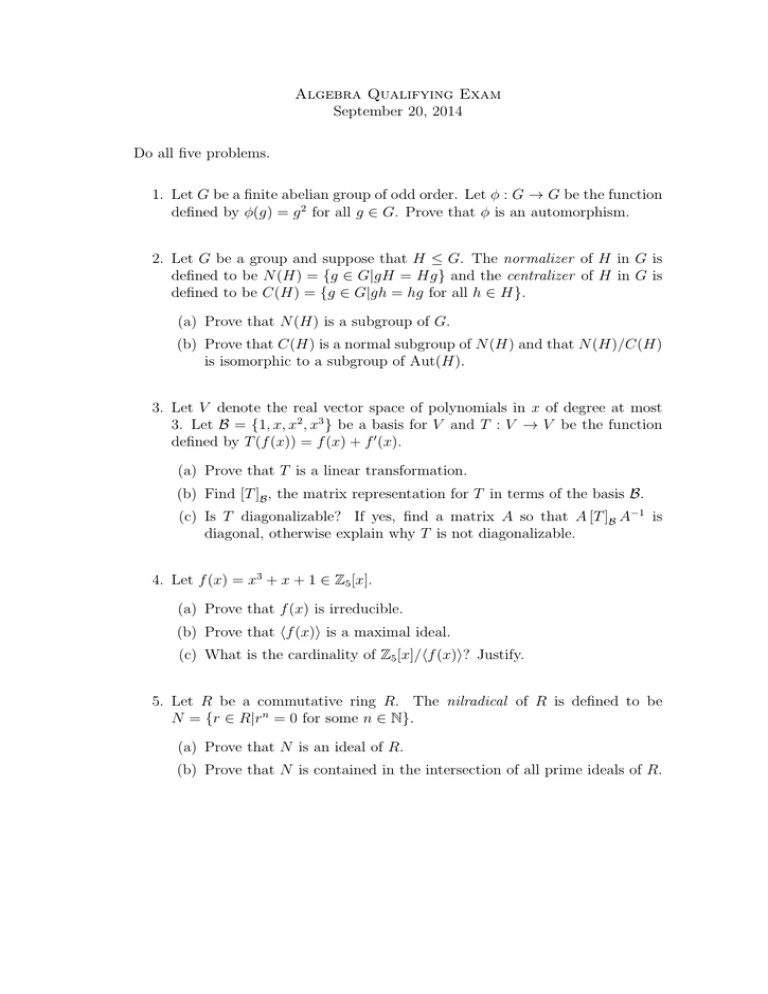
Algebra Qualifying Exam
September 20, 2014
Do all five problems.
1. Let G be a finite abelian group of odd order. Let φ : G → G be the function
defined by φ(g) = g 2 for all g ∈ G. Prove that φ is an automorphism.
2. Let G be a group and suppose that H ≤ G. The normalizer of H in G is
defined to be N (H) = {g ∈ G|gH = Hg} and the centralizer of H in G is
defined to be C(H) = {g ∈ G|gh = hg for all h ∈ H}.
(a) Prove that N (H) is a subgroup of G.
(b) Prove that C(H) is a normal subgroup of N (H) and that N (H)/C(H)
is isomorphic to a subgroup of Aut(H).
3. Let V denote the real vector space of polynomials in x of degree at most
3. Let B = {1, x, x2 , x3 } be a basis for V and T : V → V be the function
defined by T (f (x)) = f (x) + f 0 (x).
(a) Prove that T is a linear transformation.
(b) Find [T ]B , the matrix representation for T in terms of the basis B.
(c) Is T diagonalizable? If yes, find a matrix A so that A [T ]B A−1 is
diagonal, otherwise explain why T is not diagonalizable.
4. Let f (x) = x3 + x + 1 ∈ Z5 [x].
(a) Prove that f (x) is irreducible.
(b) Prove that hf (x)i is a maximal ideal.
(c) What is the cardinality of Z5 [x]/hf (x)i? Justify.
5. Let R be a commutative ring R. The nilradical of R is defined to be
N = {r ∈ R|rn = 0 for some n ∈ N}.
(a) Prove that N is an ideal of R.
(b) Prove that N is contained in the intersection of all prime ideals of R.
